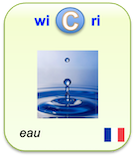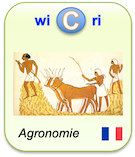Polymorphic crystalline structure of fish otoliths
Identifieur interne : 001B74 ( Main/Exploration ); précédent : 001B73; suivant : 001B75Polymorphic crystalline structure of fish otoliths
Auteurs : R. W. Gauldie [États-Unis]Source :
- Journal of Morphology [ 0362-2525 ] ; 1993-10.
Abstract
Although most otoliths of teleost fishes contain aragonite, a detailed survey of the otoliths of serveral species confirms that other crystalline forms of calcium carbonate occur. Otoliths of Hoplostethus atlanticus, Pagrus major, Macruronus novaezelandiae, Merluccius australis, Congiopodus coriaceus, Kathetostoma giganteum, Argentina elongata, Rhomobosolea tapirina, Neophrynichthys latus, Coelorinchus aspercephalus, Paranothothenia microlepidota, and Gonorhynchus gonorhynchus contained the aragonite, calcite, and vaterite morphs of calcium carbonate in varying proportions. Aragonitic otoliths of Allocyttus niger, Hoplostethus altlanticus, and Pagrus major contained sequences of calcite‐like crystals. The surface of the vateritic otolith of Acipenser brevirostrum is shown in detail. Three classes of information are stored in the crystalline structure of the otolith: shape conservation, coexisting crystal morphs, and consecutive changes in crystal morph. Analysis of this crystalline information supports the hypothesis of control of growth of the otolith by proteins from the sensory epithelium or macula. Protein variation involved may be genetic in origin, or non‐genetic arising from “stuttering” of the translation process. Proteins extracted from vateric and aragonitic morphs of the otolith of Macruronus novaezelandiae showed differences in infared absorption spectra that were consistent with two different amino acid sequences. © 1993 Wiley‐Liss, Inc.
Url:
DOI: 10.1002/jmor.1052180102
Affiliations:
Links toward previous steps (curation, corpus...)
- to stream Istex, to step Corpus: 000E79
- to stream Istex, to step Curation: 000E77
- to stream Istex, to step Checkpoint: 001113
- to stream Main, to step Merge: 001D04
- to stream Main, to step Curation: 001B74
Le document en format XML
<record><TEI wicri:istexFullTextTei="biblStruct"><teiHeader><fileDesc><titleStmt><title xml:lang="en">Polymorphic crystalline structure of fish otoliths</title><author><name sortKey="Gauldie, R W" sort="Gauldie, R W" uniqKey="Gauldie R" first="R. W." last="Gauldie">R. W. Gauldie</name></author></titleStmt><publicationStmt><idno type="wicri:source">ISTEX</idno><idno type="RBID">ISTEX:EF0EF4A69917F567CF0C054740ECF217405E6A52</idno><date when="1993" year="1993">1993</date><idno type="doi">10.1002/jmor.1052180102</idno><idno type="url">https://api.istex.fr/document/EF0EF4A69917F567CF0C054740ECF217405E6A52/fulltext/pdf</idno><idno type="wicri:Area/Istex/Corpus">000E79</idno><idno type="wicri:explorRef" wicri:stream="Istex" wicri:step="Corpus" wicri:corpus="ISTEX">000E79</idno><idno type="wicri:Area/Istex/Curation">000E77</idno><idno type="wicri:Area/Istex/Checkpoint">001113</idno><idno type="wicri:explorRef" wicri:stream="Istex" wicri:step="Checkpoint">001113</idno><idno type="wicri:doubleKey">0362-2525:1993:Gauldie R:polymorphic:crystalline:structure</idno><idno type="wicri:Area/Main/Merge">001D04</idno><idno type="wicri:Area/Main/Curation">001B74</idno><idno type="wicri:Area/Main/Exploration">001B74</idno></publicationStmt><sourceDesc><biblStruct><analytic><title level="a" type="main" xml:lang="en">Polymorphic crystalline structure of fish otoliths</title><author><name sortKey="Gauldie, R W" sort="Gauldie, R W" uniqKey="Gauldie R" first="R. W." last="Gauldie">R. W. Gauldie</name><affiliation wicri:level="2"><country xml:lang="fr">États-Unis</country><placeName><region type="state">Hawaï</region></placeName><wicri:cityArea>Hawaii Institute of Geophysics, School of Ocean and Earth Science and Technology, University of Hawaii, Honolulu</wicri:cityArea></affiliation></author></analytic><monogr></monogr><series><title level="j">Journal of Morphology</title><title level="j" type="abbrev">J. Morphol.</title><idno type="ISSN">0362-2525</idno><idno type="eISSN">1097-4687</idno><imprint><publisher>Wiley Subscription Services, Inc., A Wiley Company</publisher><pubPlace>Hoboken</pubPlace><date type="published" when="1993-10">1993-10</date><biblScope unit="volume">218</biblScope><biblScope unit="issue">1</biblScope><biblScope unit="page" from="1">1</biblScope><biblScope unit="page" to="28">28</biblScope></imprint><idno type="ISSN">0362-2525</idno></series><idno type="istex">EF0EF4A69917F567CF0C054740ECF217405E6A52</idno><idno type="DOI">10.1002/jmor.1052180102</idno><idno type="ArticleID">JMOR1052180102</idno></biblStruct></sourceDesc><seriesStmt><idno type="ISSN">0362-2525</idno></seriesStmt></fileDesc><profileDesc><textClass></textClass><langUsage><language ident="en">en</language></langUsage></profileDesc></teiHeader><front><div type="abstract" xml:lang="en">Although most otoliths of teleost fishes contain aragonite, a detailed survey of the otoliths of serveral species confirms that other crystalline forms of calcium carbonate occur. Otoliths of Hoplostethus atlanticus, Pagrus major, Macruronus novaezelandiae, Merluccius australis, Congiopodus coriaceus, Kathetostoma giganteum, Argentina elongata, Rhomobosolea tapirina, Neophrynichthys latus, Coelorinchus aspercephalus, Paranothothenia microlepidota, and Gonorhynchus gonorhynchus contained the aragonite, calcite, and vaterite morphs of calcium carbonate in varying proportions. Aragonitic otoliths of Allocyttus niger, Hoplostethus altlanticus, and Pagrus major contained sequences of calcite‐like crystals. The surface of the vateritic otolith of Acipenser brevirostrum is shown in detail. Three classes of information are stored in the crystalline structure of the otolith: shape conservation, coexisting crystal morphs, and consecutive changes in crystal morph. Analysis of this crystalline information supports the hypothesis of control of growth of the otolith by proteins from the sensory epithelium or macula. Protein variation involved may be genetic in origin, or non‐genetic arising from “stuttering” of the translation process. Proteins extracted from vateric and aragonitic morphs of the otolith of Macruronus novaezelandiae showed differences in infared absorption spectra that were consistent with two different amino acid sequences. © 1993 Wiley‐Liss, Inc.</div></front></TEI><affiliations><list><country><li>États-Unis</li></country><region><li>Hawaï</li></region></list><tree><country name="États-Unis"><region name="Hawaï"><name sortKey="Gauldie, R W" sort="Gauldie, R W" uniqKey="Gauldie R" first="R. W." last="Gauldie">R. W. Gauldie</name></region></country></tree></affiliations></record>Pour manipuler ce document sous Unix (Dilib)
EXPLOR_STEP=$WICRI_ROOT/Wicri/Eau/explor/EsturgeonV1/Data/Main/Exploration
HfdSelect -h $EXPLOR_STEP/biblio.hfd -nk 001B74 | SxmlIndent | more
Ou
HfdSelect -h $EXPLOR_AREA/Data/Main/Exploration/biblio.hfd -nk 001B74 | SxmlIndent | more
Pour mettre un lien sur cette page dans le réseau Wicri
{{Explor lien
|wiki= Wicri/Eau
|area= EsturgeonV1
|flux= Main
|étape= Exploration
|type= RBID
|clé= ISTEX:EF0EF4A69917F567CF0C054740ECF217405E6A52
|texte= Polymorphic crystalline structure of fish otoliths
}}
|
| This area was generated with Dilib version V0.6.27. | |

